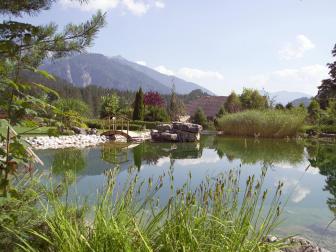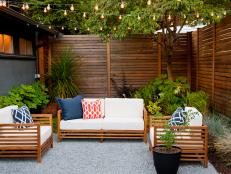Everything You Need to Know About Natural Swimming Pools
These stylish pools with plant life are chemical-free and easy to maintain.
Natural swimming pools are the latest trend in pool construction. They require no chemicals to maintain — instead, natural pools benefit from perennial plants and water flora, which help keep them clean.
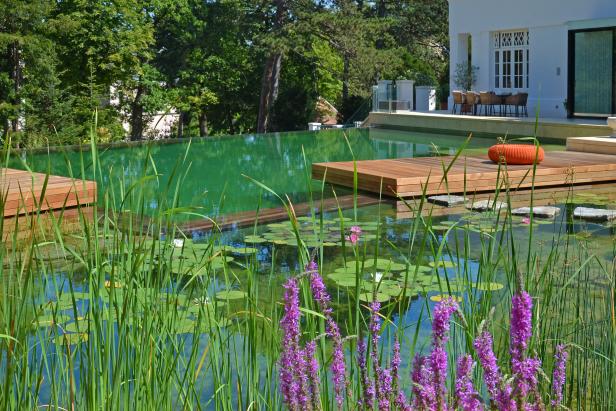
Photo courtesy of Bio Top Pools
How Natural Swimming Pools Work
So, how does a pool without chlorine provide a natural swimming experience with a water quality equal to or above your community's standards for bathing water? Natural pools rely on filters and moving water to do all the heavy lifting. Natural pools are constructed with walls or membranes that keep out soil and silt. They can be created from scratch or converted from an existing in-ground pool system.
These pools use biological filters (such as natural shale) to absorb phosphates and promote the growth of "good" bacteria to eat algae and bad bacteria. A "regeneration zone" with plant life is built adjacent to the primary swimming area. The plants in the zone provide flora that acts as a natural filter for water from the swimming area, which circulates in and out of the plant life and can be used with a special pump or skimmer system. The water is always in motion, which helps prevent the growth of unwanted organic material. In warmer climates, natural filter materials may be installed into the pool itself, and hydroponic plants assist in the filtration system — and they also look pretty!
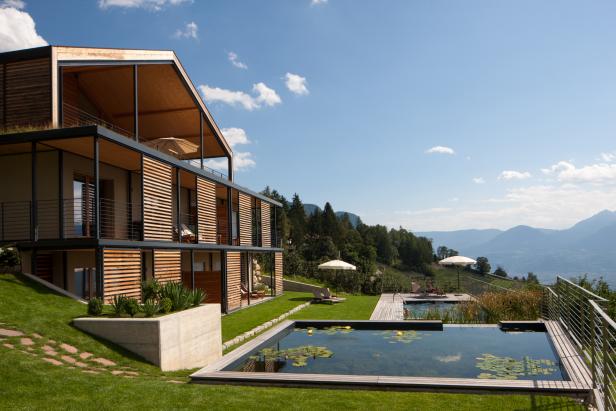
Photo courtesy of BioTop Pools.
The Benefits of Natural Swimming Pools
Natural pools come in many shapes and sizes and can mimic the look and feel of a lake or pond, with sloped entries lined with stone, rock or clay instead of concrete. Unlike a traditional pool, you don't cover, drain or refill the pool in different seasons. In cold climates, natural pools can be used in the winter as mini ice rinks (if frozen solidly); pool owners in warm or tropical climates can install solar or alternative heating systems for year-round swimming.
Because natural pools are filtered and cleaned by water in motion, filter materials and plant life, they deter pests. Snakes and frogs may be attracted to natural pools, but typically won't stay long, as there will be no reliable source of food for them in the pool; however, occasional hand skimming of the natural pool might be required for unwanted visitors.
Pool Design Ideas
25 Amazing Natural Swimming Pools 25 Photos
Residential architecture meets nature's grand design in these chemical-free swimming pools and water gardens.
Installing a Natural Swimming Pool
There are many natural pool system designs on the market, including ones pioneered by European pool manufacturers in the 1980s. If you're considering installing a natural pool, do some research to find out which design firms use a system that works with your micro-climate.
There are DIY kits and pool installation companies that discuss land size and depth requirements, materials, design plans and ballpark costs for building and maintenance of a natural swimming pool. The costs are roughly the same as if you installed a traditional in-ground concrete pool.
Although the pools have been popular internationally for a few decades, the trend is relatively new in the US, which means you may have to look beyond your local community for a qualified company to design and install your pool.
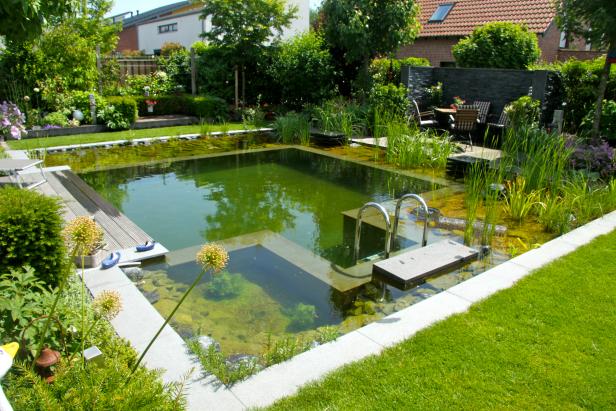
Photo courtesy of BioNova Natural Pools.
Plants Used in Natural Swimming Pools
In natural pools, many types of plants can be used to provide oxygen and aid in water filtration. Plants can be classified into three categories within the natural pool environment: emergent, deep water-rooted and floating plants. Some of the most commonly used plants in natural pools for temperate climates include water lilies, perennial grasses such as reeds like Sparganium or cattails, pond sedge and swamp hibiscus.
More Swimming Pool Advice
Pool Systems 101: Saltwater vs. Chlorine
Saltwater and chlorine systems are two of the most common pool sanitization systems. Learn about the pros and cons of each system and find some new alternatives to each.
Check out the following sites for more information about natural swimming pools: BioTop Natural Pools, BioNova Pools, Aquascape and Total Habitat.







